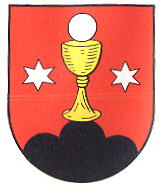Ottersweier: Difference between revisions
Knorrepoes (talk | contribs) m (Text replace - "'''Official blason:'''<br>" to "====Official blazon====") |
Knorrepoes (talk | contribs) m (Text replace - "|width="15%"|50 px|right |}" to "|width="15%"|50 px|right |}<seo title="Wappen, Gemeindewappen" />") |
||
| Line 3: | Line 3: | ||
|width="70%" align="center" |'''Heraldry of the World<br/>Civic heraldry of [[Germany]] - [[Deutsche Wappen|Deutsche Wappen (Gemeindewappen/Kreiswappen)]]''' | |width="70%" align="center" |'''Heraldry of the World<br/>Civic heraldry of [[Germany]] - [[Deutsche Wappen|Deutsche Wappen (Gemeindewappen/Kreiswappen)]]''' | ||
|width="15%"|[[File:Germany.jpg|50 px|right]] | |width="15%"|[[File:Germany.jpg|50 px|right]] | ||
|} | |}<seo title="Wappen, Gemeindewappen" /> | ||
Revision as of 18:20, 5 November 2012
| Heraldry of the World Civic heraldry of Germany - Deutsche Wappen (Gemeindewappen/Kreiswappen) |
OTTERSWEIER
State : Baden-Württemberg
District (Kreis) : Rastatt (until 1972 Bühl)
Additions : 1936 Hatzenweier, 1973 Unzhurst (1936 Oberwasser, Zell)
Official blazon
In Rot auf schwarzem Dreiberg ein goldener Kelch mit silberner Hostie darüber, begleitet von zwei silbernen Sternen.
Origin/meaning
The oldest known seal of Ottersweier dates from the middle of the 18th century. It already shows the chalice with the stars and mountain. The wafer on top was originally also a star. The arms on the seals remained unchanged until 1876, when the chalice and stars were replaced by a candle in a beaker.
In 1895 the municipality wanted to define the colours of the arms, and the State Archives proposed the older arms in the present colours. Why the upper star was replaced by a wafer (a host) is not known.
The chalice is most likely the symbol of St. Barbara, the patron saint of a chapel on the local cemetery.
Without the stars, the chalice was used as a village symbol on border stones.
Literature : Zier, 1964; John et al., 1990.

